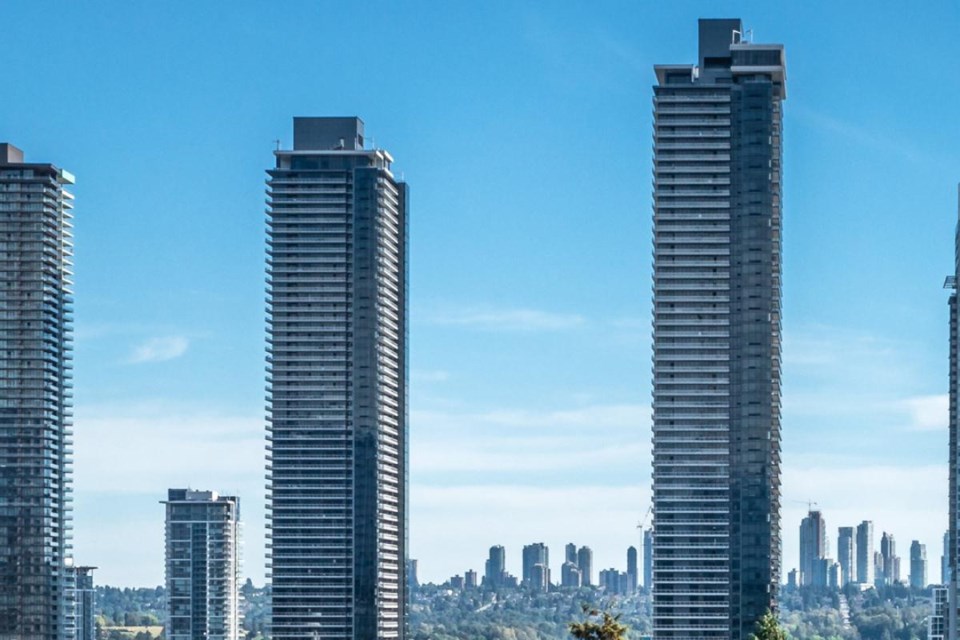Buildings are Burnaby’s largest source of community carbon emissions – now the wheels are in motion to retrofit all buildings in the city by 2050.
It’s a part of Burnaby’s climate action plan to reach carbon neutrality by 2050, after the city declared a climate emergency in 2019.
Transitioning to zero-emission buildings would reduce the city’s emissions by 34 per cent, according to the city’s climate action framework.
On Nov. 21, council received a report by the city’s zero-emissions building retrofit taskforce, outlining the massive task of retrofitting ahead.
Largest building emission source: homes and townhomes
The largest source of emissions from Burnaby’s 37,000 total buildings comes from single-family homes, two-family homes and townhomes, which make up 38 per cent of the city’s buildings emissions, according to the taskforce report.
Commercial buildings, including retail, office light industrial and others, are the second-largest source of building emissions (36 per cent), while making up 15 per cent of Burnaby’s buildings.
Lowrise and highrise buildings make up two per cent of the buildings in Burnaby and account for 55 per cent of the number of units. They make up 10 per cent of building emissions.
There are five main types of building retrofits, according to the retrofit taskforce report: replacing windows; improving insulation; installing more efficient space and water heating equipment, like heat pumps; reinforcing how airtightness (how much air escapes from a building); and switching away from fossil fuels.
A heat pump is a device that pumps heat into or out of a home, which is more energy efficient than generating heat, according to the task force report.
Different retrofit combinations can be used to decrease building emissions.
One of the goals of the task force is to transition Burnaby buildings away from conventional natural gas to reduce emissions.
‘Absolutely paramount’
Coun. Alison Gu, a member of the retrofit taskforce, said at council the work is not just about fighting climate change, but also about saving lives, referencing the 2021 heat wave that killed 63 people in Burnaby.
“This work is absolutely paramount,” Gu said. “Partly because we need to limit how severe the impacts (of climate change) become.”
Gu also lobbied for the city to accelerate the B.C. Energy Step Code.
“It will alleviate the work that we need to do, because every building that we build that is new today will require retrofitting, at some point in time. … It is, really, much more expensive to retrofit later on than it is today.”
From this report, city staff will create a retrofit strategy which is scheduled to be developed by spring 2023.
‘A huge scope of work’
The task of retrofitting buildings was described as “one of the most challenging areas of climate action for local governments,” by the city’s climate action framework, due to the few contact points between local governments and existing home and building owners, the high cost of upgrades, and the number of existing residential units (as of that 2020 report, there were 92,000 existing units).
Robin Prest, program director at SFU’s Morris J. Wosk Centre for Dialogue, stressed to council that all of Burnaby’s buildings will need to be retrofitted by 2050 to meet the city’s climate action goals.
“This is a huge scope of work that’s in front of the city,” Prest said. “And most building owners, especially the smaller building owners, don’t know that this is going to occur.”
The building retrofit taskforce report outlined the challenges to retrofitting, including a lack of awareness retrofits are required, a “sense of overwhelming complexity” about retrofitting, the upfront costs to the homeowner or occupant, and a lack of qualified people to do retrofit work.
The report recommends a variety of solutions to these challenges, including:
- Provide retrofit subsidies and incentives that increase affordability for residents living in energy poverty and/or that reduce the impacts of climate change for vulnerable residents (e.g., seniors and people with disabilities during heat waves).
- Create or join a “one-stop shop” concierge service for different building (and ownership) types to navigate the retrofit process, including planning, applying for financing and grants, paperwork, inspections and contractor management
- Launch a multilingual awareness and education campaign to explain the benefits and necessity of retrofits and the availability of concierge services
- Optimize the permitting process for all building types in ways that incentivize climate-friendly retrofit options such as heat pumps
- Provide rules or resources to both landlords and tenants to mitigate tenant disruptions or evictions during retrofits
- Accelerate the adoption of higher standards for the B.C. Energy Step Code (and upcoming carbon pollution standard) in Burnaby to increase the emission performance of new buildings and reduce the need for future retrofits
- Retrofit all City-owned buildings to lead by example, showcase solutions and stimulate the retrofit market.





